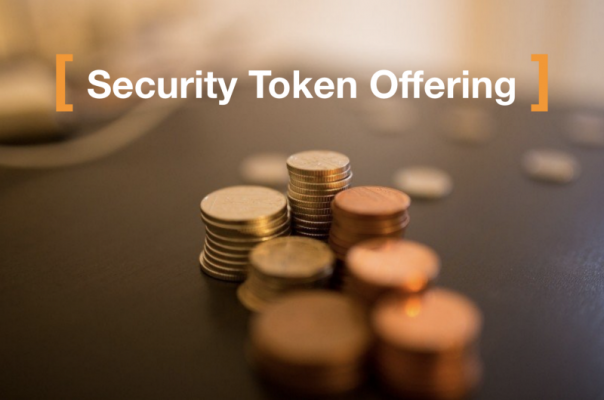If Ondo's solution is merely following in Robinhood's footsteps, prioritizing pragmatism, then Nasdaq's own appeal to the SEC for tokenized stocks directly breaks this dilemma, removing all obstacles to putting stocks on the blockchain.
Back in the day, I participated in a lot of STO-related activities.
Taking this opportunity to chat a bit.
I won't comment on whether Mystonks itself has issues, but the current predicament of tokenized securities is fundamentally due to business needs taking precedence, while regulation has lagged for years, leading to a mismatch.
From the time the concept of security tokens (STO) was proposed in 2018 until today, nearly 7 years have passed. Although the U.S. has a set of operational processes to refer to, they are neither tailored for tokenized scenarios nor are they up-to-date, and they are entirely aimed at the U.S. market.
The problem is that most of the demand for tokenized securities actually comes from non-U.S. markets. If you insist on using the highest U.S. standards, it often leads to the direct demise of the business. However, the reality is that many projects have to reference this process to design their product architecture for endorsement and compliance.
The story from 6 years ago is a living example: tZERO went to the extreme of compliance, but liquidity was directly choked off. When the new narrative of DeFi and the wealth effect emerged in 2020, this track was directly falsified.
Today, market demand has surged again, but because the regulatory process hasn't changed at all, those who want to participate will still fall into the same vicious cycle:
- Issuance
- Custody/Clearing
- Transaction/Matching
- Circulation/Transfer
1. Issuance
Regulators generally believe that tokenized stocks, even if they are a 1:1 mapping, do not equate to the legal rights of the original stocks, and thus will be regarded as newly issued securities.
In the U.S. market, newly issued securities must either go through S-1 registration for public listing, which entails high costs and complexity, or seek alternatives like Reg D private placement exemption or Reg A+ small public offering.
- Reg D
Limited sale period (6 months to 1 year)
Only for accredited investors
- Reg A
Annual limit (75 million USD)
High approval costs
Clearly, both of these methods are quite painful. tZERO died in the Reg D model: users bought but couldn't sell immediately, and had to meet accredited investor qualifications. By the time they were unlocked, the hype was already gone.
Of course, theoretically, there is another route: Reg S, which is purely aimed at overseas markets, exempt from SEC regulation. FTX actually used this model back then, but they were a centralized exchange with KYC. However, today's tokenized stocks are supposed to be purely on-chain; how can you ensure there are no U.S. users 100%?
2. Matching/Transaction
If you are just buying stocks on behalf of others, placing orders through NASDAQ or the NYSE during normal trading hours, then a Broker-Dealer license is sufficient. Even if you are only providing services for overseas market users, you just need to partner with a U.S. broker to take the orders there.
But the problem is that tokenized stocks can circulate and trade 24/7. Once your tokenized stocks are matched during off-hours, it effectively enters the regulatory definition of an "independent secondary market." In the U.S., this requires registration as a national exchange or at least as an ATS (Alternative Trading System).
The threshold for national exchanges is extremely high, so most projects typically choose ATS, but this is also a costly and slow approval route.
3. Custody/Clearing
Traditional stock custody is under the name of a Broker-Dealer, completed through DTC for clearing and settlement, and the entire process operates within a regulated closed system.
For tokenized stocks, theoretically, their underlying stocks are still normally custodied through brokers and cleared through DTC. However, stock tokens and stocks are separate; the tokens exist on-chain. While blockchain effectively replaces DTC's clearing and settlement functions, does custody also require additional solutions? Do you need to hold a banking-type custody license? If so, that's another cost.
4. Circulation/Transfer
Traditional stock transfers are completed within the clearing system, which is regulated and does not require additional payment or money transmission licenses.
However, tokenized stocks can circulate freely on-chain. If U.S. users are involved, it will trigger federal-level MSB (Money Services Business) and various state MTL (Money Transmitter License) requirements.
The same stock, once on-chain, incurs an entirely new set of compliance costs.
5. This is also the trickiest part
If you follow the highest standards for all processes—Broker-Dealer + ATS + MSB + MTL, and strictly use Reg D for issuance, you are essentially replicating tZERO. But these are all regulatory requirements for the U.S. market, while most of your clients do not come from the U.S. at all.
However, you cannot operate like Robinhood, which only facilitates transactions for clients and buys real stocks, so they only need a Broker-Dealer license. Unless you are willing to accept that your product becomes the simplest form:
- Purely using crypto to buy real stocks
- Not targeting U.S. users
- Partnering with a U.S. broker
- Only supporting trading during stock trading hours
Doing so naturally minimizes compliance risks, but commercially, it would be no different from products like Futu and Tiger, and it would be hard to compete with them in terms of experience and pricing.
6. The real breakthrough
To fundamentally solve the problem, there are only two paths:
- The SEC defines the rights relationship between tokens and original stocks
- U.S. companies also submit registrations for tokenization during the listing phase
This way, tokenized stocks would be registered public securities, equal to non-blockchain stocks, and various trading platforms could list them. Platforms with U.S. licenses could provide services to U.S. users, while those without U.S. licenses would block U.S. access. The platform would only need a Broker-Dealer license for integration.
However, at this point, trading and liquidity would inevitably concentrate on platforms like NASDAQ and the NYSE, leaving little value capture space for most participants. At least on the issuance side, there would definitely be little profit, only sharing a piece of the transaction/matching segment, bringing volume and orders to mainstream liquidity platforms.

6.88K
1
The content on this page is provided by third parties. Unless otherwise stated, OKX is not the author of the cited article(s) and does not claim any copyright in the materials. The content is provided for informational purposes only and does not represent the views of OKX. It is not intended to be an endorsement of any kind and should not be considered investment advice or a solicitation to buy or sell digital assets. To the extent generative AI is utilized to provide summaries or other information, such AI generated content may be inaccurate or inconsistent. Please read the linked article for more details and information. OKX is not responsible for content hosted on third party sites. Digital asset holdings, including stablecoins and NFTs, involve a high degree of risk and can fluctuate greatly. You should carefully consider whether trading or holding digital assets is suitable for you in light of your financial condition.

